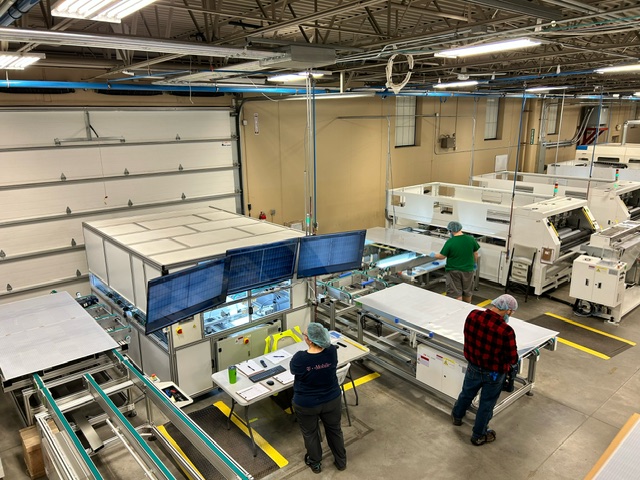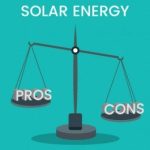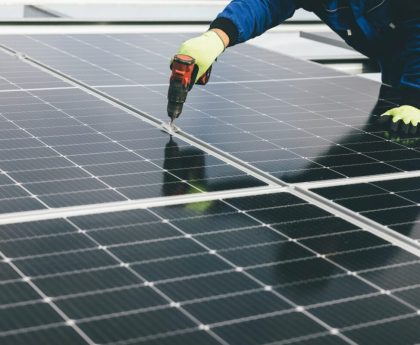Until recently, the drone of a propane-powered generator was part of the soundtrack of my family’s hunting shack north of the Mesabi Iron Range. The shack is off grid, built on what used to be a company farm that supplied food for nearby logging camps. Nevertheless, it takes electricity to produce necessary quantities of coffee and to keep the Michelob Golden Light cold but not frozen.
This year the generator fell silent and, for once, not because of mechanical failure. My father and uncles installed solar panels on a trailer that now provides the camp a reprieve from the motorized deer-repellent we had long tolerated. The cost proved less than expected and will become cheaper than running propane in a short time.
The project even won over my skeptical 89-year-old grandfather, who now thinks we need more solar panels and batteries to vanquish the finicky generator altogether.
In his long career, grandpa mined iron ore, drove truck, operated heavy equipment, owned a junkyard, and ran a bus company. Most of his sons pursued similar ambitions. Thus, our family’s carbon footprint better resembles a carbon crater where one finds conclusive evidence of the extinction of dinosaurs. But now we’ve got solar panels on the shack and one of my uncles even bought an electric car last year.
“Solar and wind are producing the cheapest electrons on the market,” Nick Hylla, executive director of the Midwest Renewable Energy Association, said in an interview. “It’s trading fuel for steel, and the fuel is light. It’s a tremendous opportunity right now.”
Inflation and high interest rates drove up construction costs in recent years, but that’s not hurting the solar industry.
“I understand that a square foot of concrete is more expensive [now], but solar is not,” said Martin Pochtaruk, President of Heliene, Inc., Minnesota’s largest solar panel manufacturer. “The return on investment is better than natural gas or any other energy for that matter.”
And Minnesota’s northern location isn’t as big a hindrance as you’d expect. Pochtaruk said that northern locations like Minnesota and Canada are ideal places to build and use solar panels, despite having slightly less direct sunlight than places farther south.
“You don’t need heat for solar,” said Pochtaruk. “Actually, solar works better when it’s not hot. As the temperature goes up the efficiency goes down.”
Sometimes things change slowly, then all at once. So it goes for renewable energy in rural bastions of fossil fuel consumption. In fact, the rapid transition creates economic opportunity, so long as political dogma bends enough to allow it.
The sun also rises
One of the largest solar panel factories in the United States operates on the Mesabi Range.
Heliene, Inc., started producing solar panels in Mountain Iron in 2018. The Canadian company rents a 95,000 square foot building from the city, which took ownership of the facility in 2017 after the failure of a previous company called Silicon Energy.
That company, Silicon Energy, was founded in 2011 to snap up Obama-era funding available for solar development. Iron Range state lawmakers and lobbyists boosted the project with special state legislation incentivizing Minnesota-made solar products. The roads leading to the plant were symbolically named for late lawmakers Tom Rukavina and David Tomassoni, respectively. The building is named for Tomassoni.
But China and Taiwan invested heavily in solar production in subsequent years and then dumped their panels on the world market. Prices collapsed. Solar panel manufacturers around the U.S. went under, including Silicon Energy. It looked like another failed Iron Range economic development gambit. But the “Made in Minnesota” solar incentives lived on, giving the facility a second chance.
Heliene started around the same time as Silicon. Pochtaruk co-founded the company in Sault Ste. Marie, Ontario, a small industrial city on Lake Superior similar to Duluth.
Heliene survived the onslaught of Chinese competition by keeping costs low. They automated production and rented space rather than building factories. The pre-existing building, already designed for solar panel manufacturing, attracted the company to Mountain Iron.
“We’ve always been in economically disadvantaged areas,” said Pochtaruk. “It has advantages to the community being where we are. It’s also an advantage to the company because the rent for the building is lower than, say, New York City. Those advantages mean lower cost of living for us and our workers.”
After installing the initial line in 2018, the company added a more sophisticated second line in 2022, bringing their workforce to about 200 people. Last month, they upgraded their first line to the newer technology, adding another 150 jobs.
These factory lines resemble a modern auto plant, with yellow robot arms swinging back and forth with precision. Shiny new solar components roll down the line, emerging as completed modules.
Though the process is automated, people monitor the machines and operate the computer systems. The factory runs 24 hours a day, creating a solar cell every 25 seconds. Heliene’s two lines in Mountain Iron generate a production capacity of 600 megawatts, almost enough to power all the mines in Minnesota.
In 2024, Heliene plans to expand into the Twin Cities. They just signed an agreement to generate 1.5 gigawatts of solar modules and their Mountain Iron and Sault Ste. Marie plants aren’t big enough to fill the orders.
Pochtaruk also said that the Minneapolis market has more available labor and the kind of large rental buildings they need.
“We prefer to spend on technology, not building buildings,” he said.
Can light cross the Red/Blue Divide?
Pochtaruk credits the Inflation Reduction Act signed by President Joe Biden in 2022 with the high demand.
“That is what is accelerating the pace of this energy transition,” he said.
He also cites the new Minnesota law mandating 100% of the state’s electricity be carbon free by 2040. That’s why Heliene is focusing on Minnesota for expansion.
Hylla, the renewable energy advocate, said manufacturing costs are the biggest challenge to opening up more solar panel production in the Midwest.
Next, Hylla said energy policy politics gets in the way, along with the need for workers.
Heliene workers start at $21 an hour. Most solar manufacturing jobs don’t require college degrees. This is a competitive wage, but lands in the middle of a competitive labor market. As adoption increases, solar system installation and maintenance will demand more trained electricians.
Living wage jobs that don’t require college would normally attract bipartisan support, but that hasn’t panned out yet. Hylla said that while former President Trump’s trade policies created a protectionist trend, legislation from President Biden and Democrats actually advanced domestic solar manufacturing and jobs.
Next, there’s the supply chain.
You can’t buy an American-made Heliene solar panel at the store. The company sells nearly all of its modules to Nexamp, a company that builds community solar gardens. These large solar farms produce energy that consumers may opt to buy through the grid, sometimes at lower prices.
Minnesota has one of the largest community solar garden programs in the country, generating more than 60% of all the solar energy in the state. However, critics argue that the program adds costs for average rate-payers and tends to benefit large businesses and local governments that can afford to install panels. Regardless, at least for now, participants come out ahead on price.
Most residential solar panels still come from China. Closing this gap in domestic production will be an important step for the U.S. solar industry. Already, solar panel manufacturers added 23 gigawatts of capacity in 2023 with 39 gigawatts of new capacity expected in 2024, according to the U.S. Energy Information Administration
The market forces underpinning the growth of solar energy are complicated. Manufacturing incentives bring production home from overseas, but are generally only supported by Democrats, and thus remain vulnerable to the next shift in political winds. Renewable energy mandates likewise find little support among Republicans.
Could lower cost solar energy finally win over conservatives?
Hylla said that individuals stand to gain from solar, but investor-owned utilities do not. This dynamic will shape the debate to come.
The promise of independence
While my family’s shack isn’t connected to the grid, homes that are can turn consumers into energy sellers during peak production.
Hylla said that, for a century, rate-paying consumers paid into the energy industry without receiving any of the profits. Investors like Warren Buffet and others made fortunes this way. Privately-owned solar energy systems change that equation.
“Now anyone can be an investor in the energy industry,” said Hylla. “That’s an amazing opportunity, not one looked upon favorably by the investor-owned utilities. It’s a tremendous opportunity to spread the wealth.”
Both off-grid and grid-based systems require energy storage. In most cases that means batteries. This is another problem to work out. Like solar panels, battery efficiency has improved dramatically in recent years while becoming more affordable.
But the minerals required for making popular styles of batteries are limited. Significant new supplies of lithium, for instance, might be needed to transition to renewable electric systems. Proponents of controversial new mining proposals in northern Minnesota cite the demand for copper, nickel and other minerals in electrical devices and energy systems.
But technology is changing. New forms of energy storage are being rushed to market, notably iron-air batteries. These batteries use iron (like the kind already mined in Minnesota) to store and release energy using chemical oxidation. These batteries store energy for long periods of time and might be most effective for use in support of the grid.
Xcel Energy is piloting an iron-air battery array at the Sherburne County Generating Station in Becker right now. Iron-air batteries are heavy and charge relatively slowly, which makes them ill-suited for phones or cars, but they could revolutionize commercial and residential energy.
“In Minnesota, a state that has very limited fossil fuel resources, the idea that you can capture resources and make revenue is as good as you’re going to get,” said Hylla.
Hylla even suggests that political support for mining could be merged with the push for renewable energy.
“With the right circumstances you could be an investor in the solar panels, manufacture the equipment and even mine some of the minerals,” said Hylla. “Once you start recycling it, you’ve got a circular economy. There are not many places in the country where this can be apolitical and local and rooted in the collective self interest like it is in the Iron Range.”
But this political coalition would require hard work to build, and members of both parties to execute.
The real cost of change
My father-in-law is a retired millwright who worked at Minnesota Power’s Boswell Energy Center in Cohasset, a coal-fired power plant. Some of my sons’ friends’ parents work there, too. With about 180 union jobs, it’s one of the biggest employers in the Grand Rapids area and represents about half of Cohasset’s tax base.
You’ll hear a saying from people who work in traditional energy industries like coal, oil and gas, spoken with a strong sense of pride: “For when the sun don’t shine and the wind don’t blow.”
Distrust of new energy sources fuels this adage. Renewables produce smaller batches of electricity with limitations that don’t affect older energy sources. Furthermore, high-paying jobs in existing power plants, or mines, for that matter, seem irreplaceable to people who rely on them. The untested nature of new renewable technology doesn’t yet convey confidence that new jobs will replace the old.
And yet, no Iron Range industry has grown faster than solar in recent years. The industry doesn’t need the mining industry to thrive; in fact, mines stand to benefit from solar, rather than the other way around.
The friction between resistance to change and its inevitability will generate a lot of heat in rural Minnesota over the next few years. Like any energy source, what we do with that heat could produce ingenuity or destruction.
“We want to make sure workers are beneficiaries,” said Hylla. “We don’t want to trade one broken system for another. There is an opportunity from a state and regional level to bring our supply chain back within our borders. It’s a tremendous time to rethink a new working class and what that means for the next ten years. That should speak to the people of the Iron Range. The politics is just churn in the water. It keeps people from seeing the opportunity.”
*This story has been corrected for the amount of solar cells Heliene plans to produce.
This post was originally published on 3rd party site mentioned in the title of this site






